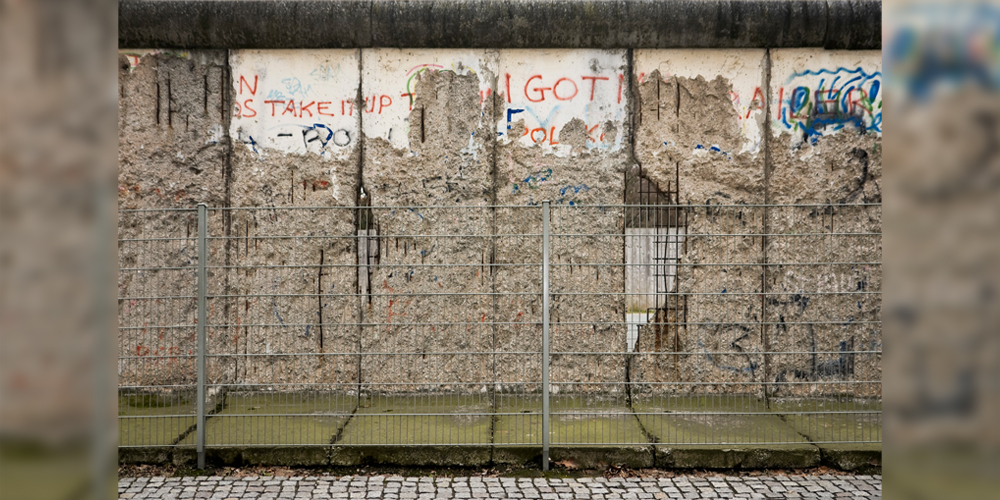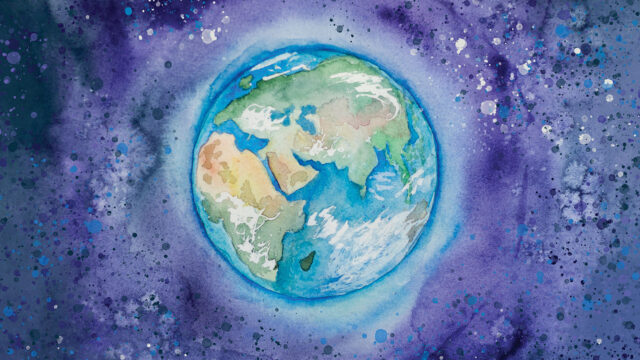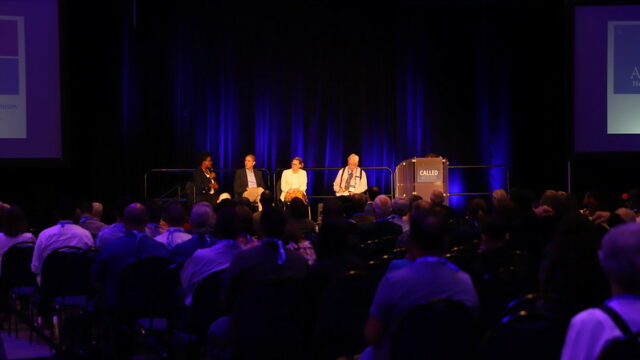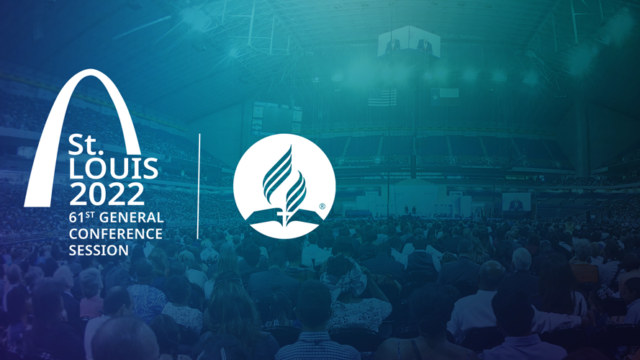What does the fall of the Berlin Wall tell us 31 years later?

We remember minute details when we think of key moments in our lives.
I remember what I was doing on November 10, 1989, the day after the Berlin Wall had come down. I was sitting in the cafeteria of Helderberg College in Somerset West, South Africa, enjoying a pleasant lunch with some friends when my girlfriend, Chantal (who happens to be my wife right now), rushed into the dining room declaring that the Berlin Wall had come down the previous night. It was front-page news in all the major South African newspapers.
My brother Martin and I looked at each other. “Impossible,” I said to her with a smile. “Someone must have thought this a funny joke, even though it isn’t April 1.”
Chantal wasn’t taking it. “I read the news story,” she said. “Go to the library and read it for yourself.” Years later, she told me that she had felt like Mary Magdalene, rushing to share the news of the empty tomb with the disciples—only to recognize that nobody seemed to believe her.
My brother and I had left Germany to continue our studies in South Africa at the end of January of that year. The Berlin Wall stood firm and unmovable at that time. In fact, I couldn’t imagine Berlin, my birthplace, without a wall. Nobody could.
And yet, the political changes leading to the toppling of the wall were swift, unexpected, at times surreal, yet transformative. Less than a year later, Germans celebrated the unification of their country.
Our Walls
There are many walls around us. North Koreans are separated from South Koreans by a demilitarized zone (DMZ) dividing a once united country. The name doesn’t do this location justice, for the DMZ is one of the most dangerous places on earth. In many parts of the world, high walls separate countries from each other.
Walls have been part of the human experience for thousands of years. From the Great Wall of China built to keep marauding Mongolian raiders out of China, to strong city walls protecting people in biblical times or later periods, walls were an ever-present and often much-needed reality.
We can see remains of some of these walls, including the Berlin Wall, even today. Archaeological remains of crumbled walls can be found all over the world.
Most of us, however, aren’t too concerned about these walls. We struggle more with the walls that we tend to build in our minds. Race, gender, caste, culture, income (or lack thereof), education, or religion continue to separate us from one another. We often divide the world into “they” and “them” and “we” and “us.” We focus on the differences without paying attention to the similarities. Clear demarcations promise a false sense of security and safety.
And so, the walls keep growing—and we continue to stay in our neighborhoods (geographically or on social media). The less we know the “others,” the scarier they tend to become.
Jesus Tears Down Walls
Tearing down walls isn’t easy. The demolition of the Berlin Wall and the reunification of Germany didn’t resolve many of the underlying issues. In fact, most Germans recognize that even in a united Germany, there is a lack of unity. Walls, now present in the minds of people, still separate east and west. Sociologists tell us that this change will need generational transformation.
Realities established over generations take generations to undo. Taking down walls in our minds and hearts involves dimensions beyond race, gender, caste, culture, income, education, or religion. Walls can only be confronted by a change of heart.
Jesus Himself faced many walls as He sought to minister to God’s people—and beyond. “Nazareth! Can anything good come from there?” Nathaniel asked in John 1:46. Pharisees and Sadducees quickly categorized Him as “too liberal,” “too literal,” “too radical,” or “too unholy.” Those working for liberation from the Roman suppression were disappointed when they realized that His kingdom was not like their dreams. And yet, Jesus kept reaching out to Zealots, Pharisees, Sadducees, the proud, the prejudiced, or the self-righteous. Jesus was (and still is) in the business of breaking down walls that separate people from people and us from God. His love was wide enough to include Romans, a Canaanite woman, people caught in adultery, and even those who daily showcased their holiness. He met Nicodemus under the protection of darkness. He paid attention to those who were considered outcasts or of less importance—including children, women, lepers, the poor, or the sick.
What Can We Do?
We are called to imitate Jesus as we recognize the walls that separate us—in our cultures, in our neighborhoods, and even in our churches. When Jesus sent off His disciples, He told them to “make disciples of all nations” (Matt. 28:19, italics supplied). Later He told them that this meant not only Jerusalem or Judea or Samaria, but also “the ends of the earth” (Acts 1:8). It took the early church a while to comprehend the implications of this command. Paul later described this divine ideal in his letter to the church in Galatia: “There is neither Jew nor Gentile, neither slave nor free, nor is there male and female, for you are all one in Christ Jesus” (Gal. 3:28). We are still trying to put into practice Paul’s radical statement, for walls have no place among God’s people.
A couple of years ago I visited a part of the Berlin Wall that’s still standing today. It’s part of an open-air memorial reminding visitors of the pain, hardship, and loss of life this wall once meant to people living on both sides. It’s a popular selfie spot for many tourists visiting the capital of Germany. It’s also a good reminder that in spite of our best efforts to break down walls, there will always be pieces standing around that remind us that we live in a world that is not our home and that we wait for a Kingdom where “ ‘there will be no more death’ or mourning or crying or pain, for the old order of things has passed away” (Rev. 21:4).
“Amen. Come, Lord Jesus” (Rev. 22:20).
Gerald A. Klingbeil is a native of Germany and serves as associate editor of Adventist Review Ministries.








